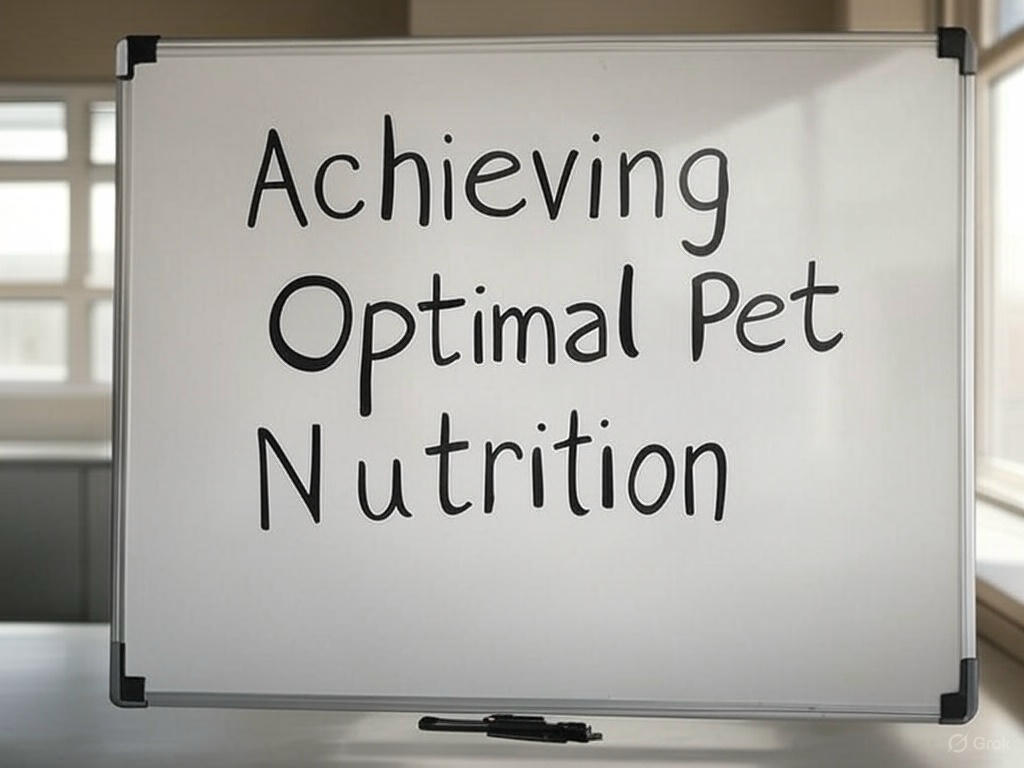Achieving Optimal Pet Nutrition: A Holistic Approach

If you make your pet available to the right nutrition, it’s not just about filling your bowl. It is about supporting your health, energy and general well -being. The right nutrition improves everything from your immune system to your quality quality and digestive health. In this blog, a holistic approach for the nutrition of pets is examined and concentrating on new perspectives that contribute to the optimal health of your pet.
The connection between the intestine and health
Did you know that the health of your pet’s digestive system affects your general health? The intestine plays an important role in its immune function, their mental health and even skin disease. A healthy intestine enables the proper absorption of nutrients, which makes a balanced diet even more important.
The involvement of fiber -rich foods, prebiotics and probiotics in the diet of your pet can promote healthy digestion. Ingredients such as pumpkin, sweet potatoes and oats offer valuable fiber that support digestion and let things run smoothly. In addition, probiotic food or nutritional supplements can help compensate for intestinal bacteria, which can be particularly advantageous for pets with sensitive stomach or that of gastrointestinal problems.
The influence of intellectual well -being on nutrition
Nutrition is not just about physical health, but also about the intellectual well -being of your pet. A well -fed pet is a happier pet. Certain nutrients such as omega-3 fatty acids contained in fish oils have positive effects on mood and perception. These nutrients can help reduce anxiety and even improve brain function, especially in older pets.
When choosing homemade food for brands that offer natural sources for nutrients for brain starch such as DHA (Docosahexaenoic acid) and EPA (EICOSAPENTAENON). These omega-3 fatty acids are available in fat fishing such as salmon and mackerel and can help your pet to remain sharp and emotionally balanced.
Adaptation of the diet to the breed -specific needs of the pet
Different breeds of pets have different nutritional needs, often due to size, level of activity and inherent health concerns. For example, large racial dogs need food that support common health, while smaller breeds may need high -calorie options to maintain their energy level. Likewise, pets with flat faces, such as Brachycephalic dog breeds (e.g. bulldogs and mops), may need food that are easier to chew and digest.
Racial -specific diets can support and ensure that the food of your pet is tailored to your unique genetics. By investing in the breed-up-up diet, you can reduce the risk of health problems in connection with breeds and improve the quality of life of your pet.
The ecological aspect of pet nutrition
Other pet owners become aware of the environmental impact of their pet’s food. Sustainable procurement of ingredients is an important consideration in today’s world. By choosing homemade food from a responsible ingredients or considering options that use vegetable proteins, you can reduce the environment footprint.
For example, some home meters of food brands now offer meals with insect protein, which is a more sustainable alternative to traditional animal proteins. These new protein sources are not only environmentally friendly, but also very nutritious. As an environmentally conscious animal owner, sustainable options benefit both your pet and the planet. If you are curious to add your dog’s diet, you may be surprised, dogs can have blueberries and whether you offer health benefits or represent risks.
Rotation intake for balanced diet
Another approach to achieve optimal nutrition for your pet is the rotation intake. This includes turning between different types of food to expose your pet to a variety of nutrients and flavors. Rotative feeding can prevent the development of food, reduce boredom with their meals and ensure that they get a wider nutrient spectrum from different protein sources.
By turning between different types of proteins (e.g. chicken, beef, lamb or fish) or various food brands, you can ensure that your pet receives a variety of vitamins and minerals. However, when it comes to the transition between food, it is important to gradually avoid this in order to avoid digestive disorders.
The importance of treating foods such as medicine
The inclusion of food as medicine is an emerging trend in animal nutrition. Just like people, pets can benefit from the therapeutic properties of certain foods. For example, turmeric is known for its anti -inflammatory properties that can help to manage joint pain in older pets. Similarly, certain herbs such as parsley and mint can calm down the digestive disorders and even promote fresh breath.
Advice with a holistic veterinarian or nutritionist for pets can help you identify food with specific therapeutic advantages and create a food plan that not only supports general health, but also concerns certain diseases that your pet has.
Regular monitoring on long -term success
Maintaining a balanced diet is an ongoing process. If your pet age or your activity levels change, your nutritional needs will develop. Through regular examinations with your veterinarian, you can monitor your pet’s health and adjust your diet accordingly. This ensures that you get the right nutrients for every life level.
Weight monitoring is particularly important, since obesity is a main concern for pets. If your pet increases to weight, you may need to adapt your food portions or switch to another food that supports weight management.
Diploma
The balanced diet is the cornerstone of your pet health. By concentrating on indigestion, mental well -being, racial needs and sustainability, you can offer a holistic diet that supports every aspect of your pets. Remember that nutrition is not a one-size approach. It requires understanding the individual needs of your pet and adaptation of your diet. With the right care, your pet will lead a longer, healthier and more fulfilling life at your side.





